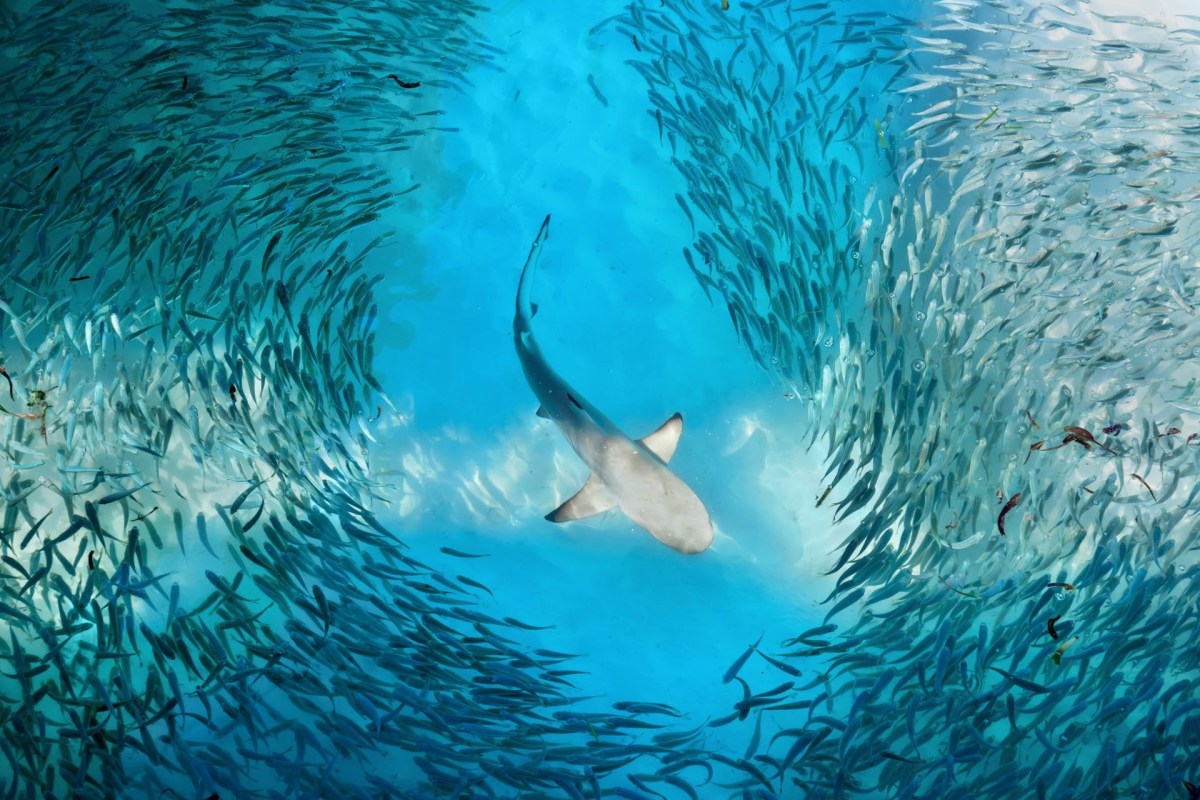Tree planting is often touted as one natural way to remove carbon dioxide from the atmosphere — but one lesser-known strategy could involve big animals, like elephants, sharks, and wolves.
A new study has demonstrated the game-changing role that large animals play in carbon capture and storage and makes a case for trophic rewilding to help moderate global temperatures.
What is trophic rewilding?
Trophic rewilding involves reintroducing species into an environment to encourage top-down interactions between predators and prey.
Supporters of trophic rewilding increasingly center on the importance of predators in self-regulating biodiverse ecosystems. Large predators play a crucial role in population control of other species in their habitat and in carbon storage.
In Scotland, for example, the lack of predators has allowed the deer population to flourish. These deer now hamper conservation efforts because they eat tree saplings.
In 2022, the Lynx to Scotland report made the case for reintroducing lynx to the Scottish Highlands to naturally control deer numbers.
Why is trophic rewilding important?
Reducing the amount of carbon dioxide in the atmosphere is essential to keep rising global temperatures in check, but research shows that our planet's plants and forests are not up to the task.
Researchers estimate that in order to restrict the global temperature increase to 2.7 degrees Fahrenheit above pre-industrial levels (equivalent to the 1.5°C limit sought by international climate agreements), we need to remove over 7.1 billion U.S. tons of carbon dioxide from the atmosphere per year until 2100, according to New Scientist magazine.
But current models that solely prioritize protecting forests, wetland, coastal, and grassland ecosystems fall short of that goal by about 551 million to 1.65 billion U.S. tons per year, according to New Scientist's reporting.
Trophic rewilding could significantly bolster these natural carbon removal and storage solutions.
According to the new study published in Nature Climate Change, protecting or expanding just nine wildlife species (African forest elephants, American bison, baleen whales, reef sharks, grey wolves, wildebeest, sea otters, musk oxen, and certain ocean fish) could help to extract over seven billion tons of carbon dioxide per year — reportedly more than 95% of the carbon dioxide removal target set by the Paris Agreement.
"We have the technology to scrub CO2 from the atmosphere," the report's lead author, Oswald Schmitz, told Positive News. "It's called nature."
"If you do some of the rough calculations, the numbers rival those of what the IPCC is right now promoting in terms of converting everything to solar or wind generation," Schmitz said, referring to recommendations by the Intergovernmental Panel on Climate Change.
How rewilding helps with carbon dioxide removal
Animals help with carbon removal in part by distributing seeds, changing the microbe makeup of their habitats, and storing carbon dioxide.
As reported in New Scientist, large animals like bison, elephants, whales, and sharks all store carbon in their bodies, with whales taking that carbon deep to the bottom of the ocean when they die.
Whales' breath and feces also encourage the growth of phytoplankton on the sea surface, which capture carbon.
Meanwhile, studies have shown that herbivores that dig and forage for food can contribute to soil health. By disturbing the soil, water infiltration increases, and small pockets of water, organic matter, and seeds can develop.
These pockets can have higher nutrient levels than the surrounding soil, which can stimulate more plant growth.
More plants means more potential for carbon capture, and some animals help to moderate carbon pollution, too. When animals like wildebeest graze on grasslands, they can reduce the chance of wildfires, which produce significant amounts of carbon dioxide.
Join our free newsletter for cool news and cool tips that make it easy to help yourself while helping the planet.









